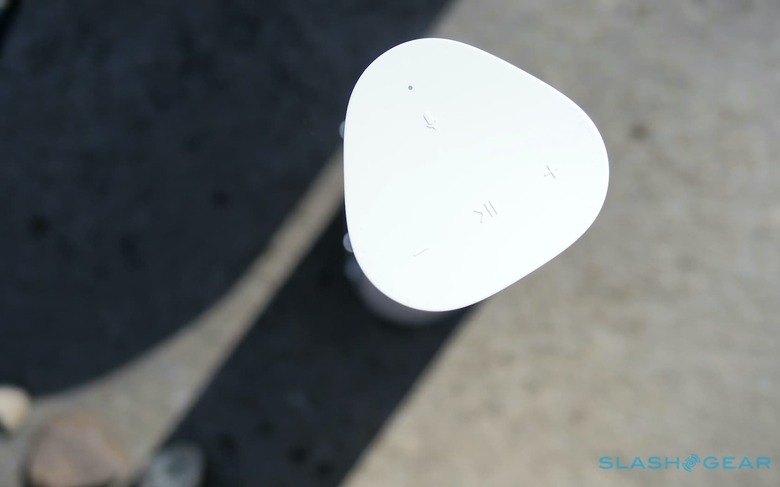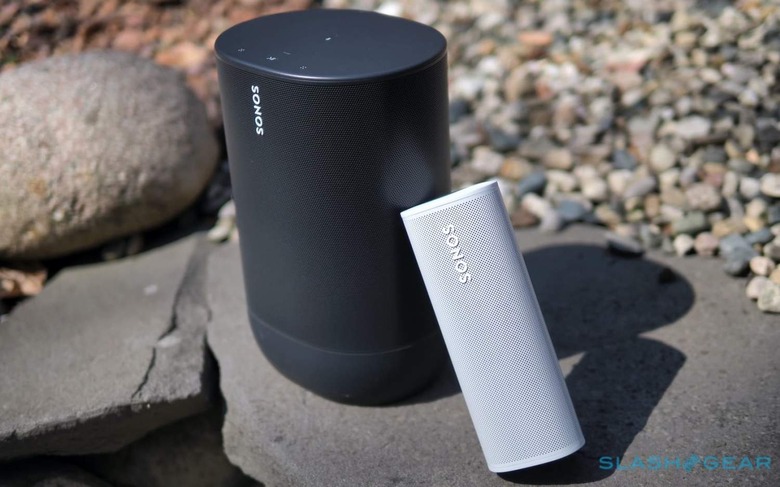Sonos Sound Swap Is Roam's Secret Weapon: Here's How To Use It
Sonos Roam isn't just the company's most affordable connected speaker so far, it also introduces a new feature to make managing music playback easier. Sound Swap allows you to bypass the app when you're in a hurry to get going, flipping music from a traditional Sonos speaker over to your Sonos Roam so you can head elsewhere in the house or outside.
Sound Swap makes juggling playback easy
If you want to move your music from a fixed speaker to Roam, you could of course use the app. That takes a few button presses, however, which is where Sound Swap comes in.

Pressing and holding the play/pause button on Roam will automatically shift the current playback from the nearest Sonos speaker to the portable speaker. Conversely, if you press and hold that button again, what's playing on Roam will be transferred over to the nearest Sonos speaker. It's really easy to use, and there's hardly a gap in playback.
Sound Swap actually works by playing tones that nearby speakers here: that allows Sonos to know which is closest, and so which it should transfer playback to. Because of that, if you have Roam's microphone muted – using the button on the top panel – then Sound Swap won't work.
There's a quick Sonos group shortcut that ignores the app
Sound Swap builds on an existing Sonos grouping feature which not everyone knows about. If you want granular control over different rooms and zones, you'll need to whip out the Sonos app for that. There, you can choose which speakers are grouped together, as well as setting up stereo pairs of matching Sonos models.

It's also possible to save groups of rooms that you commonly connect together, to make it easier to link them up again in future. If, for example, you often group your kitchen and dining room speakers, you can use the "Create Group" option in the Sonos S2 app to set up a favorite. Then, from the System tab in the app, you can hit the group button on any room, and choose the preset again.
If, however, you just want to link a Sonos speaker to an existing room's playback, there's actually a way to do that directly from the speaker's controls themselves. Holding down the play/pause button on a speaker will add it to another room – or group of rooms – that are already playing music. Similarly, holding that button down again will ungroup a room from its current group.
Sonos Sound Swap does have some limitations
While Sound Swap makes moving music between Roam and other Sonos speakers much easier, and vice-versa, it doesn't work in every situation. The most significant is around the type of streaming you're doing, or more specifically the network you're streaming on.

Sound Swap only works with Sonos network music. That is, if you're playing music through your Roam via Bluetooth, from your phone for example, you can't Sound Swap that to a fixed Sonos speaker when you get home. The same goes for audio from AirPlay 2, or from a TV.
Roam does, though, have a useful Bluetooth feature that's arguably even better. When you return within range of your Sonos WiFi network, Roam will automatically reconnect in the background – without interrupting your Bluetooth streaming. If you then add other Sonos speakers to it as a group in the Sonos S2 app, they'll all play the Bluetooth audio as well. In effect, you're using Roam as a Bluetooth line-in source.
Not every Sonos speaker supports Sound Swap
There's another limit that could make a difference to how you use Sound Swap, but it's more around certain speakers than the feature itself. Older models – including the Play:3, Play:1, Port, Connect, Connect:Amp, and Boost – aren't compatible with Sound Swap. If you have a Sonos Amp, meanwhile, it'll only work with the feature if it's also connected to Sonos Architectural speakers.
Again, there are workarounds there. If you have one of those older speaker models grouped with a newer speaker that does support Sound Swap, then as long as you're reasonably close to that model you'll be able to use it with Roam.
